Back in 1971, after New York Times columnist James Reston paid a visit to China, acupuncture made its official appearance in the U.S. James published an article describing his personal experience with acupuncture used to relieve pressure from the stomach after an operation. Since then, interest in the procedure has only grown.
He wrote, “… inserted three long thin needles into the outer part of my right elbow and below my knees and manipulated them in order to stimulate the intestine and relieve the pressure and distension of the stomach. That sent ripples of pain racing through my limbs and, at least, had the effect of diverting my attention from the distress in my stomach. Meanwhile, Doctor Li lit two pieces of an herb called ai, which looked like the burning stumps of a broken cheap cigar, and held them close to my abdomen while occasionally twirling the needles into action … there was noticeable relaxation of the pressure and distension within an hour and no recurrence of the problem thereafter.”
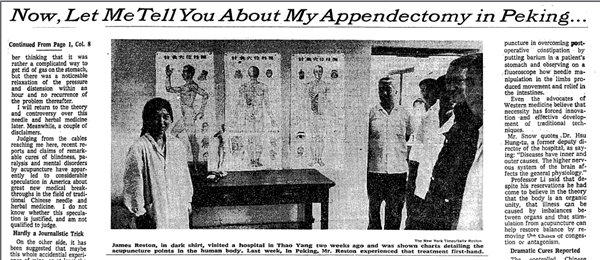
(“Now, Let Me Tell You About My Appendectomy in Peking” by James Reston)

In 1989, after suffering lower limb paralysis and wrist lesions, a French lady turned to acupuncture treatment. One month later, she was surprised by the result: she could swim 15 laps in the pool and climb out on her own.
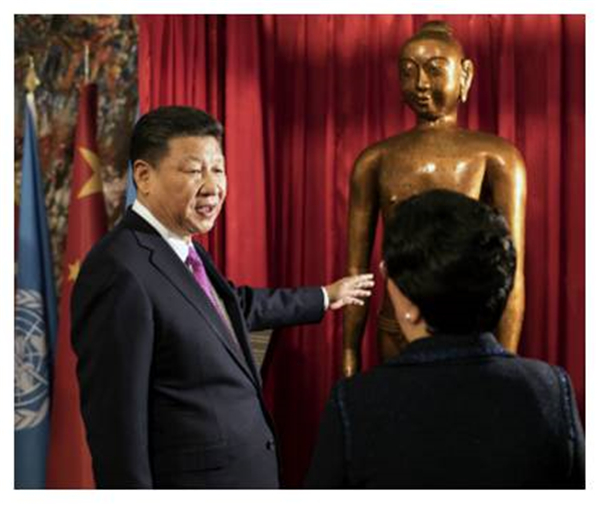
In 2017,Chinese President Xi Jinping presented a bronze acupuncture statue to the World Health Organization (WHO) in Geneva.
While it was in the 1970s that acupuncture began to sweep the world, it was introduced to France as early as the 1600s by Jesuit missionaries, and then influenced the European medicinal academic field at the time. Acupuncture institutes were set up in France, Austria and other countries.
Nowadays, people around the world see a growing number of made-in-China acupuncture needles used in local TCM clinics, colleges and research institutions. The Suzhou Medical Appliance Factory (SMAF) is one of the major acupuncture instrument manufacturers committed to promoting TCM to the world.
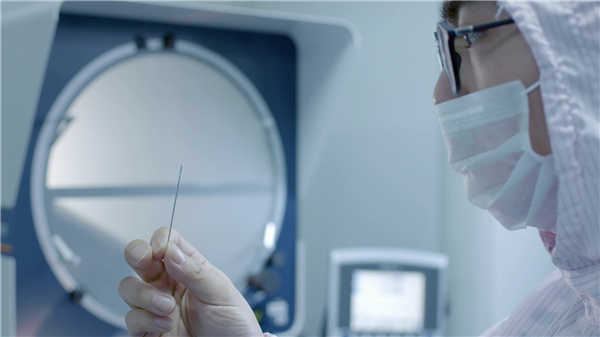
An art crafted in China
According to the WHO, acupuncture and moxibustion can be used to treat 64 conditions ranging from migraine and osteoarthritis to cervicobrachial syndrome and pareses following a stroke. 103 WHO members have given approval to the practice, with 29 having enacted special statutes on TCM, and 18 having included acupuncture and moxibustion treatment in their medical insurance provisions.
As the origin country of the latter two techniques, China is also a major producer of acupuncture needles, for which the global demand reached 8 billion last year, and the number is growing at 5%-10% on a yearly basis. The Hwato acupuncture needles made by SMAF, which is the world’s largest acupuncture needle provider, have been sold to more than 100 countries and are especially popular in the US, Germany, France and Italy.
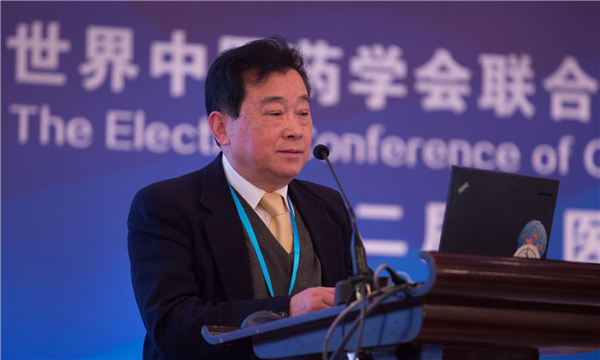
(Cao Yang, chairman of Suzhou Medical Appliance Factory)
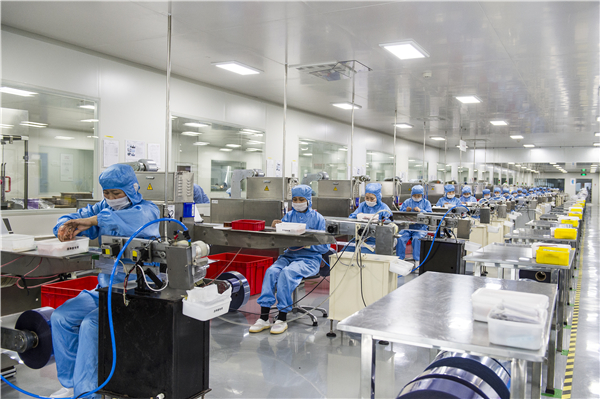
(Good Manufacturing Practice workshop)
According to Cao Yang, chairman of SMAF, besides China, Japan, South Korea, Germany, Vietnam and others are producing homemade acupuncture needles. While Chinese acupuncture needles have captured 50% market share, Japanese and South Korean acupuncture needle brands occupy a significant share (about 10% and 35% respectively) due to relatively advanced mechanization and automation. How does Hwato distinguish itself from other countries’ brands?
Doctors in different countries practice acupuncture using different techniques. Foreign TCM doctors prefer simple acupuncture techniques while Chinese doctors also use other methods. As Cao explains, Japanese needle handles feature plastic or stainless steel tubes, while in South Korea, needles are made from stainless steel and have a spiral wound steel handle. Chinese needles mostly feature ring handles and there is always a hole at the needle tail to hold dried mugworts (for a therapy called warm needling).
To meet different demands, Hwato acupuncture needles come in over 280 types (including Japanese and South Korean needles), with the longest being 66cm. Materials also vary, ranging from gold and silver to bronze and stainless steel.

(At SMAF, robotic arms automate the factory production line.)
In terms of the production process, SMAF has automated its manufacturing processes. “In the past, each acupuncture needle was hand-polished by a silversmith. Today, production can be mechanized almost 100%,” said Cao.
Pioneer in setting standards
In 1980, SMAF formulated the country’s first national standard for acupuncture needles. In 2007, it was bold enough to set an international standard, which marks the first ISO (International Organization for Standardization) international standard in the industry of TCM and medical devices, and the first led by a Chinese company.
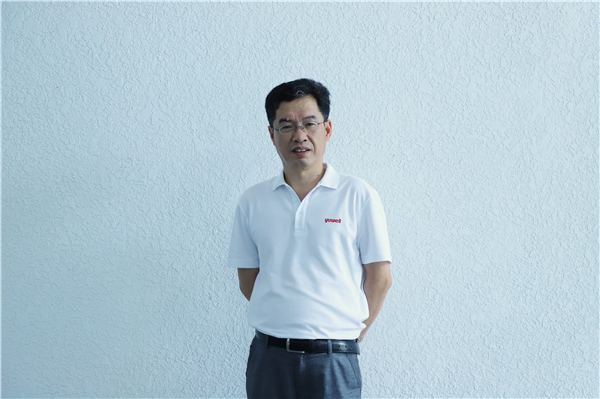
(Xu Aimin, deputy GM of Suzhou Medical Appliance Factory)
Starting from 2007, in order to come up with a draft standard, Cao Yang and his team conducted plenty of clinical trials and certification. The ISO project eventually involved 13 countries. A total of 259 suggestions were proposed by foreign experts. Though there are different types of needle handle, it was agreed that the body of the needle should be solidly joined to the handle of the needle at the root. Thus the project team reached a consensus on the appropriate level of drawing strength of the needle body.
After 15 rounds of strenuous modifications, ISO 17218:2014 was published on February 3, 2014, specifying the requirements for sterile single-use acupuncture needles (specialized for filiform needles).
Over the past 5 years, six countries have applied the standard. As the project leader, SMAF is the direct beneficiary. It saw a significant rise in the sales of Hwato needles. “In 2008, we produced 600 million needles annually. Now the output has reached 1.8 billion, and the number is growing at a rate of 20-30% per year,” added Xu Aimin, deputy GM of Suzhou Medical Appliance Factory. “Each product has its life. But it seems that the acupuncture needle has a long life.”
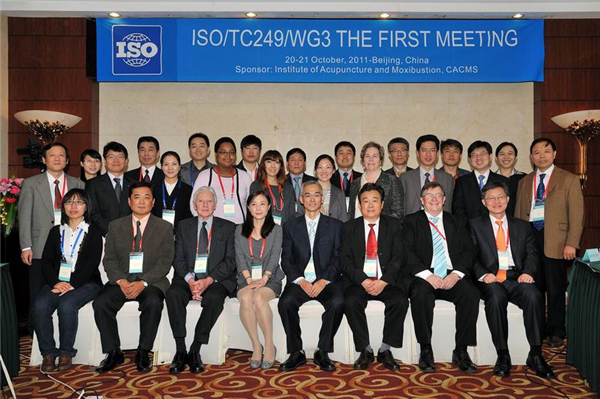
(Cao and his team at the first meeting of ISO/TC 249/WG3 – ensuring the quality and safety of acupuncture needles)
When the international standard for single-use acupuncture needles was being prepared, ISO/TC 249, laying down TCM standards, came into being in 2009. Chinese acupuncture and moxibustion is a business card of China. The publication of the international standard has blazed a trail for the international standardization of Chinese products with independent IPs and technical advantages.

(Press conference for the publication of ISO 17218: 2014)
A century-old brand
SMAF has been making acupuncture needles for 150 years. For a century-old enterprise, inheritance and innovation are key to keeping its vitality and competitiveness. Likewise, to achieve sustainable development, TCM methods like acupuncture and moxibustion need to modernize themselves, learning from and complementing western medicine.
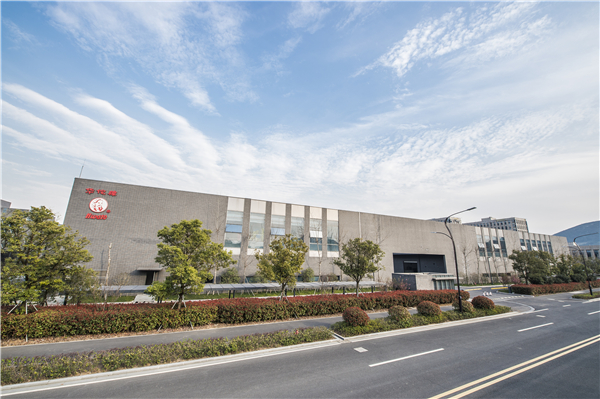
(The factory is located in a hi-tech park in Suzhou.)
Over the past years, SMAF has been created many innovative products. It has won two national invention patents by working with the China Academy of Chinese Medical Sciences. One invention is a nerve and muscle stimulator that can carry out 12 kinds of acupuncture manipulation. The other one is a project supported by the national natural science fund: the auricular vagus nerve stimulator, suitable for diabetes, sleep disorders, anxiety and other auxiliary treatments.
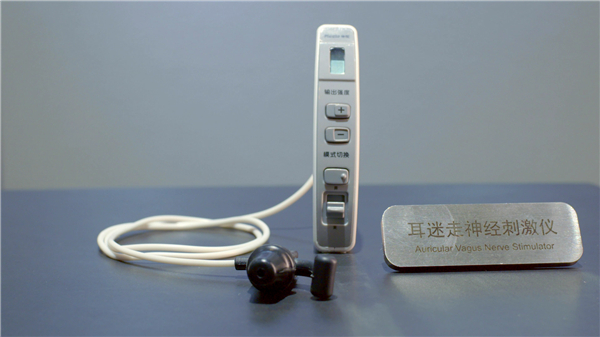
(Auricular vagus nerve stimulator)
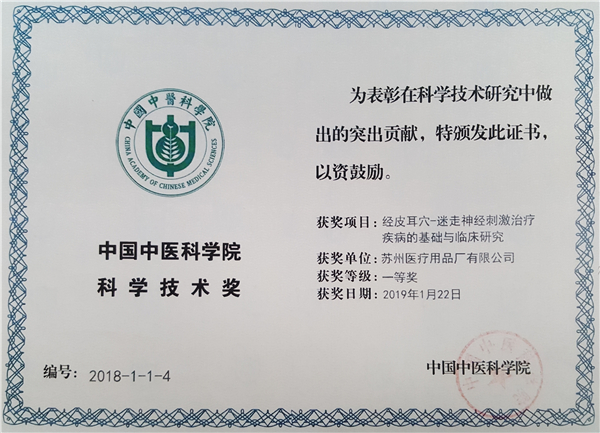
(The auricular vagus nerve stimulation project was awarded by the China Academy of Chinese Medical Sciences.)
Liu Baoyan, president of the China Association for Acupuncture and Moxibustion, once said that he expected acupuncture and moxibustion to become a first-class discipline. This is also Cao’s and many experts’ wish. The internationalization of TCM depends on how acupuncture and moxibustion go global.“That needs joint effort from clinical teams, research institutes, educational bodies and enterprises,” said Cao.
(Photos provided by SMAF)
